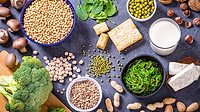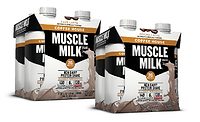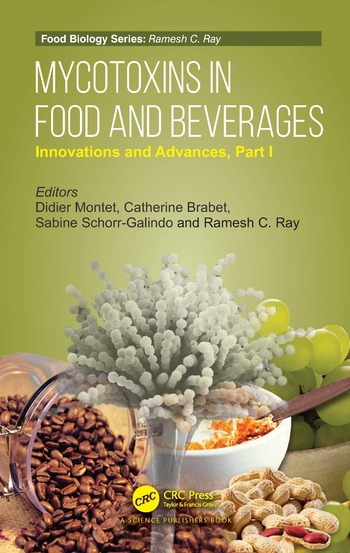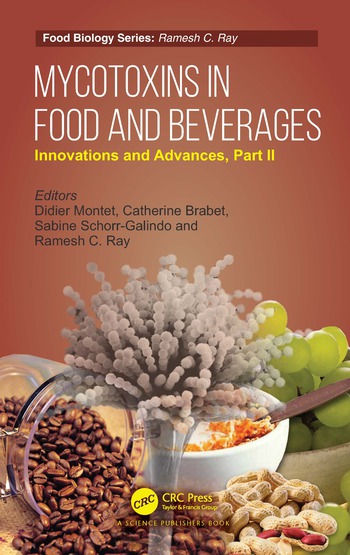Ingredient Spotlight
Health, sustainability boost interest in plant-based proteins for beverages
Pea, hemp protein usage on the rise

Vegan consumers might have gotten the plant-based diet movement started, but demand has perpetuated thanks primarily to growing consumer interest in health and sustainability, experts say. As a result, plant-based foods and beverages are thriving.
In February, Chicago-based SPINS reported that the total plant-based marketplace is growing 29 percent year-over-year in natural enhanced and multi-outlets. This nearly doubles the 15 percent growth rate of the total food and beverage market, it stated.
Similarly, plant-based protein products are doubling the growth of their animal-based counterparts in most segments, says Diana Munoz, associate manager of marketing and business development of protein isolates and concentrates for Ingredion Inc., Westchester, Ill. “I anticipate this trend to continue as more people look for healthier and more natural products,” she says.
Plant-based products no longer are niche, says Ryan Bracken, co-chief executive officer of Merit Functional Foods, Winnipeg, Manitoba.
“It’s motivating major CPG companies to reformulate and innovate new product lines,” he says. “Consumers are migrating to plant-based products for many reasons, but the two we hear most frequently is that they are considered better for their health and better for the planet.”
For instance, a June 2020 survey from the International Food Information Council (IFIC) reported that nearly 70 percent of consumers consider protein from plant sources the healthiest; 24 percent said they eat more plant-based dairy; and more than 40 percent assume a product described as “plant-based” would be healthier than one that is not, notes Mark Fahlin, business development manager at Minneapolis-based Cargill.
Sustainability also is important to consumers, Fahlin adds.
“It’s important to us, too, and one of the reasons we partnered with PURIS,” he explains. “Yellow peas are often grown as cover crops, helping farmers minimize soil erosion, and naturally return nitrogen to the soil. PURIS takes the sustainability story one step further, raising and manufacturing 100 percent of its yellow peas in North America — local sourcing that resonates with many consumers.”
Likewise, St. Louis-based EverGrain Ingredients utilizes local ingredients, boosting sustainability through circularity. Backed by Leuven, Belgium-based Anheuser-Busch InBev, the company uses saved grain from brewing and sustainably transforms it into barley-based fiber and protein ingredients.
“Through our ability to access barley that is grown locally, we can reduce our carbon footprint by eliminating the need for shipping routes,” says Charlie Ross, chief marketing officer for EverGrain. “We’ve taken the time to ensure that our supply chain provides stability to your supply chain and a sustainability story for your product.”
Beyond health and sustainability, the pandemic itself has helped to boost interest in plant-based products, Ingredion’s Munoz says. “According to IFIC’s Food and Health Survey, 85 percent of Americans have altered their food habits as a result of the pandemic, with 28 percent eating more protein from plant sources, 24 percent eating more plant-based dairy, and 17 percent eating more plant-based meat alternatives.”
Trendy proteins
Soy remains the dominant plant protein in the market because it’s affordable, highly functional and one of the few nutritionally complete plant proteins based on its Protein Digestibility Corrected Amino Acid Score (PDCAAS), says Melissa Machen, Cargill’s senior technical services specialist for plant protein. However, pea protein has become a notable competitor thanks to its label-friendly status and its nutritional and functional attributes, she says.
“Nutritionally, pea protein has a very good protein content,” Machen explains. “PURIS pea protein has a minimum 80 percent protein, enabling higher levels of fortification than many other botanical options. While not a complete protein, pea protein also has a high PDCAAS of 0.78, well above most plant proteins. Functionally, pea protein provides nice texture, emulsification and water-binding properties, and has high solubility — all critical attributes for beverage applications.”
Also offering pea protein ingredients, Merit Functional Foods touts its patented extraction process, which removes impurities and reduces the intensity of pea flavor, Bracken says. The resulting pea protein is a 90 percent pure, soluble protein with an amino acid profile that eliminates many of the previous barriers to usage, he says.
Emerging plant-based options include hemp, chickpea and fava bean proteins, according to Michael Spinelli, founder and chief innovation officer of Nutriati Inc., Henrico, Va.
Yet, the current market is ripe with opportunity for new plant protein options, EverGrain’s Ross suggests. This includes barley protein options, such as its EverPro soluble barley protein isolate, he notes.
Merit Functional Foods also is capitalizing on the market’s potential, offering a high-purity, non-GMO canola protein as well as its line of MeritPro pea and canola protein blends.
Packaging promotion
As plant-based diets grow more mainstream, consumers are becoming more discerning about the types of protein they’re seeking, making packaging callouts more important.
“Traditionally, we’ve seen plant-based products simply featuring the ‘plant-based protein’ claim on the front of packaging,” Merit’s Bracken says. “However, consumers are becoming more considerate of the protein options they choose and are now interested in knowing what type of protein is in the product they’re purchasing and where it comes from. That’s why we’re starting to see the specific source — whether that be pea, pumpkin, brown rice, etc. — called out on packaging. We expect that this shift will continue as consumers have better taste experiences with different types of protein.”
Specifically in the sports nutrition sub-category, many brands are utilizing plant-based protein ingredients and using slogans like “plant-powered protein” to promote them, adds Janae Kuc, senior marketing manager for the beverage segment at Ingredion Inc.
“With protein fortification/enhancement being a key influencer in purchase decisions, visibility of the ingredient at a high level calling out plant-based protein is prevalent,” she says.
Formulation expectations
Despite the popularity of plant-based proteins, consumers still have high expectations when it comes to product taste, Merit’s Bracken notes.
“While early adopters of the plant-based movement may have been more forgiving of a plant-based product’s taste, today the consumer base has significantly grown — and with that growth has come the expectation of good taste and texture and the ability to move to a plant-based diet without trade-offs,” he explains.
Luckily, plant proteins have come a long way as well, and many solutions exist to solve the formulation challenges that commonly occur.
For instance, plant proteins lack of milk fat can cause texture and mouthfeel challenges, Cargill’s Machen notes. As a solution, formulators often turn to texturizers to add back the texture that consumers have come to expect, she says. Other challenges include a lack of sweetness, solubility and amount of protein being delivered. Thus, formulators often use natural flavors, emulsifiers and complementary protein sources to reach the finished product they desire.
Last year, Parsippany, N.J.-based DSM Nutritional Products launched DelvoPlant, a range of enzymes specifically designed to optimize the taste, texture and sweetness of plant-based drinks.
However, sometimes the nature of the beverage itself can cause an issue. For example, coffee drinks and fruit smoothies typically have a low pH, which can create formulation challenges, Cargill’s Machen notes.
“In these acidic applications, pH levels are much closer to the isoelectric point of pea protein, causing the protein to hydrolyze and precipitate out of solution,” she explains. “However, formulators can compensate with hydrocolloids like pectin, which help stabilize proteins in these systems. To address this issue, Cargill developed pectins specifically designed to surround the protein molecule, preventing it from breaking down and keeping it in solution. Cargill’s pectins, sometimes used in combination with gellan gum or carrageenan, help maintain mouthfeel and prevent protein sedimentation throughout the product’s shelf life.”
The viscosity of the beverage also is important to ensure shelf-life stability, notes Erin Nese, technologist of commercial innovation acceleration for U.S./Canada at Ingredion.
“It is ideal for particles in a beverage to be homogenous throughout,” she says. “If you see protein sedimentation, you may want to consider using stabilizers in the beverage. Processing efficiency is a key consideration and depends on how plant protein disperses and hydrates. If the plant protein is not properly dispersed before processing, aggregates may form and create foaming at high shear, resulting in a less efficient process.”
For beverages facing color, texture and flavor challenges, complementary flavor profiles such as chocolate, coffee, mocha and can help, Nutriati’s Spinelli says.
Although the taste and formulation of a beverage is vital, the economical and scalable aspects of a beverage in terms of supply chain and processing technology are just as important, he adds.
“Crop diversity from a varietal and regional perspective is critical as well as attention to overall best practices in agronomy and agricultural inputs,” Spinelli says.
Looking for a reprint of this article?
From high-res PDFs to custom plaques, order your copy today!










